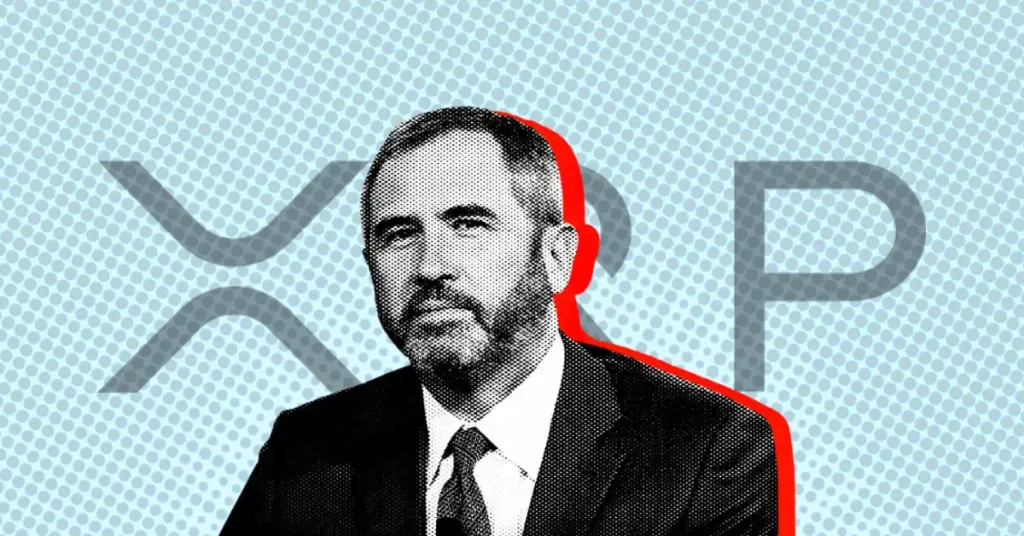Ripple CEO Brad Garlinghouse Predicts Stablecoin Market to Surge to $2 Trillion – Here’s Why
Stablecoins are about to eat traditional finance's lunch—again. Ripple CEO Brad Garlinghouse just dropped a bombshell prediction: the stablecoin market will balloon to $2 trillion. No vague maybes, no banker-speak qualifiers. Just a trillion-dollar bet on crypto's most pragmatic weapon.
From Niche to Nuclear
Remember when stablecoins were just a sideshow for crypto traders? Now they're rewriting global payments, dodging SWIFT fees, and—let's be honest—making central bankers sweat. That $2 trillion figure isn't a moon-shot; it's the logical endpoint of money finally catching up with the internet.
The Institutional Juggernaut
BlackRock's tokenized fund? Just the opening act. Every Wall Street dinosaur scrambling onto blockchain needs stablecoins like oxygen. Garlinghouse knows Ripple's playing chess while legacy finance struggles with checkers.
Cynical Take
: Watch regulators suddenly 'discover' stablecoin risks when JPMorgan's own coin hits $1 trillion. Funny how that works.
One thing's certain: the era of pretending stablecoins are a passing fad? Over. The real question isn't if they'll hit $2 trillion—it's who gets left holding the dollar when they do.

The stablecoin sector, once a quiet corner of the crypto world, is now stealing the spotlight. Ripple CEO Brad Garlinghouse predicts the market will grow nearly tenfold, from $250 billion to $2 trillion in just a few years. Speaking to CNBC, he called this shift “profound,” pointing to rising institutional demand and the long-awaited clarity around regulations now falling into place.
This projection echoes U.S. Treasury Secretary Scott Bessent, who recently said that dollar-linked stablecoins could hit $2 trillion and play a key role in strengthening the U.S. dollar’s global dominance. With bipartisan support growing in Congress, the expansion of stablecoins seems inevitable.
Ripple Enters the Race with RLUSD
Garlinghouse acknowledged that Ripple may have joined the stablecoin race later than others, but emphasized that the decision was strategic. Ripple had been using third-party stablecoins for years and chose to launch its own, RLUSD, only after recognizing the increasing demand for enterprise-ready, compliant solutions.
![]() HUGE: BNY Mellon just became the primary custodian for @Ripple's $RLUSD stablecoin
HUGE: BNY Mellon just became the primary custodian for @Ripple's $RLUSD stablecoin
This is NOT just another crypto partnership – this is a 240-year-old Wall Street giant basically saying "stablecoins are legit"![]()
What this means:
Traditional banks are finally embracing… pic.twitter.com/4sRVm9AIDg
Launched in late 2024, RLUSD has already made significant strides. This week, it crossed the $500 million market cap milestone and is now custodied by traditional finance giant BNY Mellon. RLUSD also got a major boost as Transak integrated it into its platform. Now, Transak’s 8.3 million users can buy RLUSD using various fiat currencies, expanding its reach and accessibility. Though Tether (USDT) and Circle (USDC) still lead the stablecoin market, new developments are pushing Ripple’s RLUSD to gain traction with fresh approaches and growing institutional support.
Regulation Brings Momentum
One major factor unlocking this growth is the recent passage of the GENIUS Act, which provides a clear framework for issuing and regulating stablecoins in the U.S. Industry leaders say this could supercharge adoption.
- Also Read :
- Ripple vs SEC: CEO Celebrates XRP Lawsuit Win, But Here’s Why It’s Not Fully Over Yet
- ,
Apollo Capital’s Henrik Andersson supports this outlook, pointing out that companies like Amazon and Walmart are beginning to explore stablecoin-based payments, another sign that a multi-trillion-dollar market is within reach.
Ripple is also going further. It has applied for a U.S. national bank charter and a Federal Reserve Master Account, aiming to closely connect traditional finance with blockchain. The ongoing push for the CLARITY Act and other bills adds further momentum toward clear legal standards.
Crypto Reaction
As regulation fuels confidence, crypto markets are responding. XRP surged 7% this week, hitting a seven-week high of $2.42. ethereum reached $2,771, while Solana climbed to $157, highlighting how stablecoin advancements are driving renewed enthusiasm across the crypto space.
Never Miss a Beat in the Crypto World!Stay ahead with breaking news, expert analysis, and real-time updates on the latest trends in Bitcoin, altcoins, DeFi, NFTs, and more.
FAQs
Why did Ripple decide to launch its own stablecoin, RLUSD?Ripple strategically launched RLUSD in late 2024 after years of using third-party stablecoins. The decision was driven by increasing institutional demand for enterprise-ready, compliant solutions, and the emerging regulatory clarity in the U.S.
How are other cryptocurrencies reacting to stablecoin advancements and regulatory clarity?The growing confidence fueled by stablecoin regulation is positively impacting the broader crypto market. XRP surged 7% to a seven-week high of $2.42, Ethereum reached $2,771, and Solana climbed to $157, indicating renewed enthusiasm across the crypto space.
How does the GENIUS Act specifically support stablecoin growth, and what other bills like the CLARITY Act might follow?The GENIUS Act establishes a comprehensive federal framework for stablecoin issuance, mandating 1:1 reserve backing with liquid assets, regular public disclosures, and robust consumer protections. This clarity instills confidence for institutional adoption. The Digital Asset Market Clarity (CLARITY) Act is another key bill aiming to define jurisdiction between the SEC and CFTC for digital assets, further solidifying the regulatory landscape.


